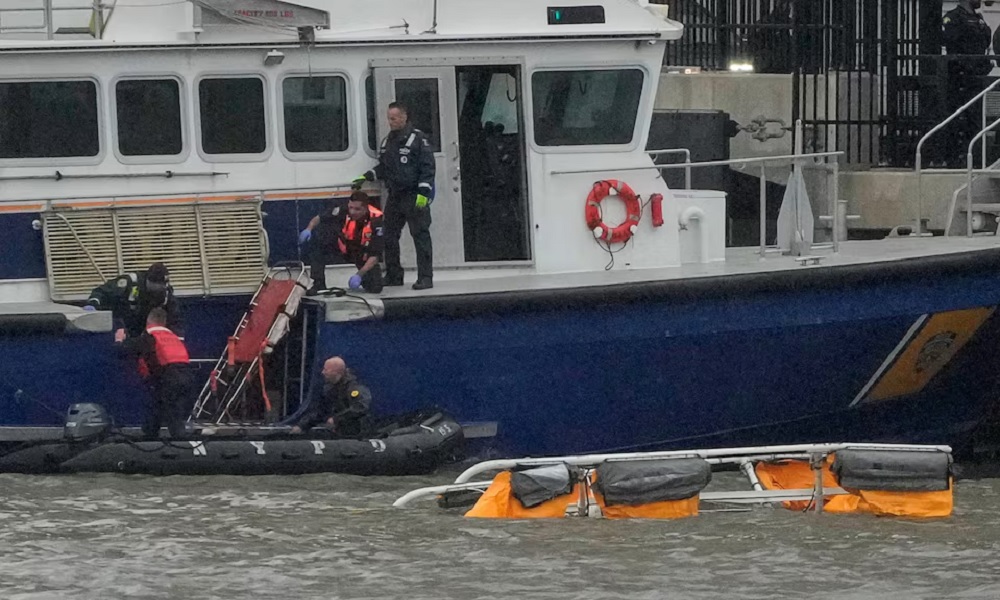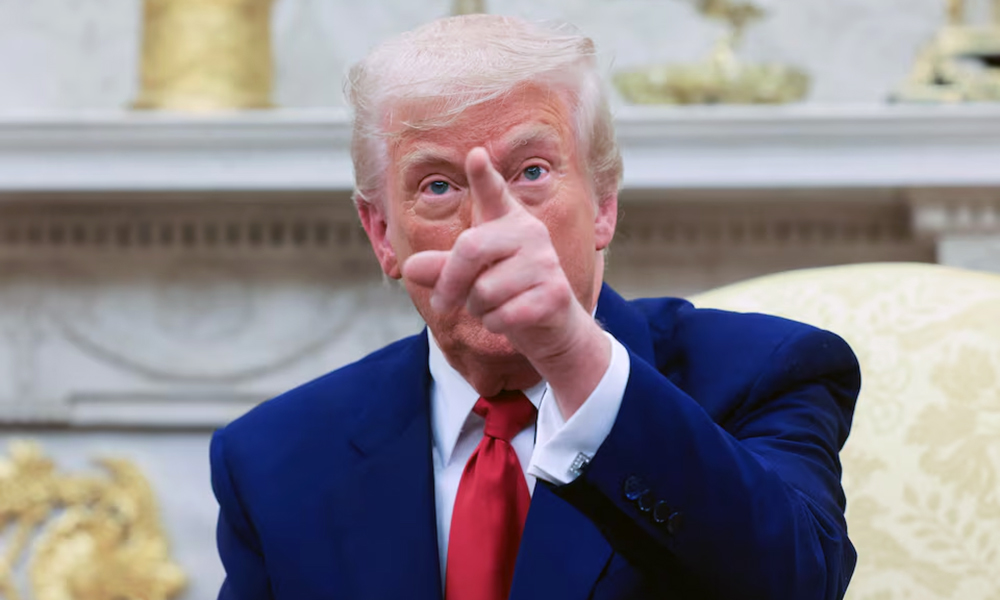World
More Rohingya refugees reach Indonesia after weeks at sea

A second group of weak and exhausted Rohingya Muslims landed on a beach in Indonesia’s northernmost province of Aceh on Monday after weeks at sea, officials said.
The group, the second in two days, saw at least 185 men, women and children disembark from a rickety wooden boat at dusk on Ujong Pie beach at Muara Tiga, a coastal village in Aceh’s Pidie district, said local police chief Fauzi.
“They are very weak because of dehydration and exhaustion after weeks at sea,” Fauzi said.
A distressing video circulated widely in social media showed the 185 dehydrated and exhausted Rohingya, crumpled weakly and emaciated, many crying for help, AP reported.
The 83 men, 70 women and 32 children were transferred by military trucks to a school just before midnight on Monday from a village hall where they previously received help from residents, health workers and others.
One of the refugees who spoke some Malay and identified himself as Rosyid, told The Associated Press that they left a camp in Bangladesh at the end of November and drifted on the open sea. He said at least “20 of us died aboard due to high waves and sick, and their bodies were thrown into the sea.”
Chris Lewa, the director of the Arakan Project, which works in support of Myanmar’s Rohingya, confirmed on Tuesday that the boat that landed on Ujong Pie beach on Monday was from the group of 190 Rohingya who were reported by United Nations to be drifting in a small boat in the Andaman Sea for a month.
She told AP by email that the arrivals were among four groups of Rohingya refugees that had left Cox’s Bazar district in Bangladesh late November by smaller boats to avoid detection by local coast guards before they were transferred onto four larger boats for their respective journeys.
A Vietnamese oil ship rescued one of the boats with more than 150 people onboard off the coast of Myanmar on Dec. 8, but then towed it to shore after provide them with food and water, Lewa said.
In Dec. 18, the second boat, carrying 104 people, was rescued by the Sri Lankan navy. Lewa said the captain of that boat last week sent a message to his relative who lives at one of the refugee camps in Cox’s Bazar that the third boat may have sunk because he had received an “SOS call” from the third boat’s captain which was about to sink and asking him to transfer the passengers on his boat, but he refused as his overcrowded boat already had an engine problem and he feared that to transfer them would result in everyone sinking.
The fourth boat “finally landed in northern part of Aceh, Indonesia, in late afternoon on Monday,” Lewa said, after weeks of her organization pleading with south and southeast Asian countries to help.
The UNHCR on Friday urged countries to rescue the refugees, saying reports indicated they were in dire condition with insufficient food or water.
“Many are women and children, with reports of up to 20 people dying on the unseaworthy vessel during the journey,” the agency said.
World
Tourist helicopter crashes into New York’s Hudson River, killing all six aboard
Agustin Escobar, an executive at Germany-based technology company Siemens was among those killed according to the New York Times, which cited unnamed law enforcement sources, Reuters reported.

A tourist helicopter plummeted upside down into New York City’s Hudson River on Thursday killing all six people on board, including a Spanish family with three children and the pilot, Mayor Eric Adams said.
Agustin Escobar, an executive at Germany-based technology company Siemens was among those killed according to the New York Times, which cited unnamed law enforcement sources, Reuters reported.
New York City police referred requests for confirmation that Escobar was aboard the helicopter to the U.S. Coast Guard. The Coast Guard said in a statement that it did not yet have the names of the victims. Siemens did not immediately respond to a request for comment outside normal business hours.
Video of the crash showed what appeared to be a large object plunging into the river, followed seconds later by what appeared to be a helicopter blade. Afterwards, emergency and police boats were seen circling around a patch of river where the helicopter was submerged, with only what appeared to be the aircraft’s landing gear poking above the water’s surface.
The Bell 206 chopper, operated by New York Helicopter Tours, departed at about 3 p.m. ET (1900 GMT) from a downtown helicopter pad and flew north over the Hudson River, New York Police Commissioner Jessica Tisch said.
It turned south when it reached the George Washington Bridge and crashed minutes later, hitting the water upside down and getting submerged near Lower Manhattan at around 3:15 p.m., just off Hoboken, New Jersey, Tisch added.
Divers helped remove the victims from the water. Four were pronounced dead at the scene, while two others were taken to area hospitals where they died.
The airspace around Manhattan is crowded with helicopters offering tourists a bird’s-eye view of the sights, with at least two dozen operators listed on tour website Viator. Many of the operators also offer helicopter shuttle services to the area airports.
New York Helicopter Tours, which offers sightseeing flights for as little as $114 per person on its website, did not respond immediately to a request for comment about the crash.
Transportation Secretary Sean Duffy said the tour helicopter was in Special Flight Rules Area established in New York that means no air traffic control services were being provided when it crashed.
The Federal Aviation Administration and the National Transportation Safety Board will investigate, with the NTSB leading the investigation.
Duffy said the FAA was also launching a Safety Review Team on Thursday evening. NTSB Chair Jennifer Homendy and a team from the board will arrive in New York later on Thursday and plan to hold a press briefing on Friday.
New York City has a history of accidents involving helicopters. In 2018, five passengers aboard a helicopter died when it crashed into the East River, while the pilot survived. The helicopter was on a charter flight that featured an open door to allow passengers to take photographs of the skyline.
A New York City Police spokesperson said that police boats had assisted in Thursday’s rescue efforts.
Helicopter safety has been a topic of discussion in the U.S. Congress after 67 people were killed in a crash between an American Airlines regional jet and Army helicopter on Jan. 29 near Reagan National Airport in Washington, D.C. The FAA has since permanently restricted helicopter traffic near that airport and is reviewing helicopter operations near other major airports.
World
Trump U-turns on tariffs but keeps trade war heat on China

U.S. President Donald Trump’s stunning decision to pause the hefty duties he had just imposed on dozens of countries sent battered global stock markets surging on Thursday even as he ratcheted up a trade war with the world’s No. 2 economy China.
Trump’s turnabout on Wednesday, which came less than 24 hours after steep new tariffs kicked in on most trading partners, followed the most intense episode of financial market volatility since the early days of the COVID-19 pandemic, Reuters reported.
The upheaval erased trillions of dollars from stock markets and led to an unsettling surge in U.S. government bond yields that appeared to catch Trump’s attention.
“I thought that people were jumping a little bit out of line, they were getting yippy, you know,” Trump told reporters after the announcement, referring to jitters sportpeople sometimes get.
U.S. stock indexes shot higher on the news, with the benchmark S&P 500 index closing 9.5% higher. Bond yields came off earlier highs and the dollar rebounded against safe-haven currencies.
The relief spread through Asian markets as they opened on Thursday with Japan’s Nikkei index surging 8% while European futures also pointed to a sharp rebound. Even Chinese stocks rose, propped up by hopes of state support, although its yuan currency fell to the lowest level since the global financial crisis.
Since returning to the White House in January, Trump has repeatedly threatened an array of punitive measures on trading partners, only to revoke some of them at the last minute. The on-again, off-again approach has baffled world leaders and spooked business executives.
U.S. Treasury Secretary Scott Bessent asserted that the pullback had been the plan all along to bring countries to the bargaining table. Trump, though, later indicated that the near-panic in markets that had unfolded since his April 2 announcements had factored in to his thinking.
Despite insisting for days that his policies would never change, he told reporters on Wednesday: “You have to be flexible.”
But he kept the pressure on China, the second biggest provider of U.S. imports. Trump said he would raise the tariff on Chinese imports to 125% immediately from the 104% level that took effect at midnight.
Beijing on Wednesday slapped 84% tariffs on U.S. imports to match Trump’s earlier tariff salvo and has vowed to “fight to the end” in an escalating tit-for-tat trade dispute between the world’s top two economies.
Chinese companies that sell products on Amazon are preparing to hike prices for the U.S. or quit that market due to the “unprecedented blow” from the tariff hikes, the head of China’s largest e-commerce association said.
‘GOADED CHINA’
Trump’s reversal on the tariffs imposed on other countries is also not absolute. A 10% blanket duty on almost all U.S. imports will remain in effect, the White House said. The announcement also does not appear to affect duties on autos, steel and aluminum that are already in place.
The 90-day freeze also does not apply to duties paid by Canada and Mexico, because their goods are still subject to 25% fentanyl-related tariffs if they do not comply with the U.S.-Mexico-Canada trade agreement’s rules of origin. Those duties remain in place for the moment, with an indefinite exemption for USMCA-compliant goods.
Trump’s tariffs had sparked a days-long selloff that erased trillions of dollars from global stocks and pressured U.S. Treasury bonds and the dollar, which form the backbone of the global financial system. Canada and Japan said they would step in to provide stability if needed – a task usually performed by the United States during times of economic crisis.
Analysts said the sudden spike in share prices might not undo all of the damage. Surveys have found slowing business investment and household spending due to worries about the impact of the tariffs, and a Reuters/Ipsos survey found that three out of four Americans expect prices to increase in the months ahead.
Goldman Sachs cut its probability of a recession back to 45% after Trump’s move, down from 65%, saying the tariffs left in place were still likely to result in a 15% increase in the overall tariff rate.
Treasury Secretary Bessent shrugged off questions about market turmoil and said the abrupt reversal rewarded countries that had heeded Trump’s advice to refrain from retaliation. He suggested Trump had used the tariffs to create maximum negotiating leverage. “This was his strategy all along,” Bessent told reporters. “And you might even say that he goaded China into a bad position.”
Bessent is the point person in the country-by-country negotiations that could address foreign aid and military cooperation as well as economic matters. Trump has spoken with leaders of Japan and South Korea, and a delegation from Vietnam met with U.S. officials on Wednesday to discuss trade matters, the White House said.
Bessent declined to say how long negotiations with the more than 75 countries that have reached out might take.
Trump said a resolution with China was possible as well. But officials have said they will prioritize talks with other countries.
“China wants to make a deal,” Trump said. “They just don’t know how quite to go about it.”
Trump told reporters that he had been considering a pause for several days. On Monday, the White House denounced a report that the administration was considering such a move, calling it “fake news.”
Earlier on Wednesday, before the announcement, Trump tried to reassure investors, posting on his Truth Social account, “BE COOL! Everything is going to work out well. The USA will be bigger and better than ever before!”
Later, he added: “THIS IS A GREAT TIME TO BUY!!!”
World
Trump says US and Iran set for direct nuclear talks; Tehran says they will be indirect
Iran’s Foreign Minister Abbas Araqchi posted on X that indirect high-level talks would be held in Oman, adding: “It is as much an opportunity as it is a test. The ball is in America’s court.”

President Donald Trump made a surprise announcement on Monday that the United States and Iran were poised to begin direct talks on Tehran’s nuclear program, but Iran’s foreign minister said the discussions in Oman would be indirect, Reuters reported.
In a further sign of the difficult path to any deal between the two geopolitical foes, Trump issued a stark warning that if the talks are unsuccessful, “Iran is going to be in great danger.”
Iran had pushed back against Trump’s demands in recent weeks that it directly negotiate over its nuclear program or be bombed, and it appeared to be sticking to that position on Monday.
“We’re having direct talks with Iran, and they’ve started. It’ll go on Saturday. We have a very big meeting, and we’ll see what can happen,” Trump told reporters in the Oval Office during a meeting with visiting Israeli Prime Minister Benjamin Netanyahu.
“And I think everybody agrees that doing a deal would be preferable,” Trump said. He added that Saturday’s talks with Iran would be at a very high level, without elaborating. He declined to say where the talks would take place but held out the possibility that a deal could be reached.
Iran’s Foreign Minister Abbas Araqchi posted on X that indirect high-level talks would be held in Oman, adding: “It is as much an opportunity as it is a test. The ball is in America’s court.”
The U.S. and Iran held indirect talks during former President Joe Biden’s term but they made little if any progress. The last known direct negotiations between the two governments were under then-President Barack Obama, who spearheaded the 2015 international nuclear deal that Trump later abandoned.
Warnings by Trump of military action against Iran had jangled already tense nerves across the Middle East after open warfare in Gaza and Lebanon, military strikes on Yemen, a change of leadership in Syria and Israeli-Iranian exchanges of fire.
Trump, who has beefed up the U.S. military presence in the region since taking office in January, has said he would prefer a deal over Iran’s nuclear program to armed confrontation and on March 7 said he had written to Supreme Leader Ayatollah Ali Khamenei to suggest talks, read the report.
Iranian officials said at the time that Tehran would not be bullied into negotiations.
“Iran cannot have a nuclear weapon and if the talks aren’t successful I actually think it will be a very bad day for Iran,” Trump said in the Oval Office on Monday.
Direct talks would not occur without the explicit approval of Khamenei, who in February said negotiations with the U.S. were “not smart, wise, or honorable.”
Hours before Trump’s announcement, Iranian Foreign Ministry spokesperson Esmail Baghaei said Iran was awaiting a U.S. response to Tehran’s proposal for indirect negotiations. He said the Islamic Republic believed it was making a generous, responsible and honorable offer.
After Trump spoke, a senior Iranian official, speaking on condition of anonymity, told Reuters: “The talks will not be direct … It will be with Oman’s mediation.” Oman, which maintains good relations with both the U.S. and Iran, has been a longtime channel for messages between the rival states.
Iran’s Nournews, affiliated with the country’s top security body, described Trump’s statement about a planned direct meeting as part of a “psychological operation aimed at influencing domestic and international public opinion.”
A second Iranian official, speaking on condition of anonymity, said over the weekend there was possibly a window of around two months to reach a deal, citing worries that Iran’s longtime foe Israel might launch its own attack if talks took longer.
Netanyahu, who has shown little support for U.S. negotiations with Iran, said if diplomacy could prevent Tehran from ever getting nuclear weapons “in a full way, the way it was done in Libya, I think that would be a good thing.”
During his 2017-2021 term, Trump withdrew the U.S. from the 2015 deal between Iran and world powers designed to curb Iran’s sensitive nuclear work in exchange for sanctions relief. Trump also reimposed sweeping U.S. sanctions, Reuters reported.
Since then, Iran has far surpassed that deal’s limits on uranium enrichment.
Western powers accuse Iran of having a clandestine agenda to develop nuclear weapons capability by enriching uranium to a high level of fissile purity, above what they say is justifiable for a civilian atomic energy program.
Tehran says its nuclear program is wholly for civilian energy purposes.
The White House National Security Council did not immediately respond to a request for details.
The shift comes at a precarious time for Tehran’s regional “Axis of Resistance” which it has established at great cost over decades to oppose Israel and U.S. influence. The axis has been severely weakened since the Palestinian group Hamas’ attack on Israel on October 7, 2023, tipped the Middle East into conflict.
Hamas in Gaza and Hezbollah in Lebanon have been hammered by Israel since the Gaza war began while the Houthi movement in Yemen has been targeted by U.S. airstrikes since last month. Israel severely damaged Iran’s air defenses last year.
The fall of Syrian President Bashar al-Assad, another key Iranian ally, has further weakened the Islamic Republic’s influence.
-

 Latest News4 days ago
Latest News4 days agoIEA rejects reports of US military planes landing at Afghanistan’s Bagram Air Base
-

 Latest News4 days ago
Latest News4 days agoTrump’s tariff pressure on Afghanistan ‘will impact economic growth’
-

 Health4 days ago
Health4 days agoAid cuts could leave more women dying in pregnancy and birth, UN says
-

 Regional4 days ago
Regional4 days agoIran-backed militias in Iraq ready to disarm to avert Trump wrath
-

 Latest News4 days ago
Latest News4 days agoUN urges donors to keep up critical support for Afghanistan
-

 Latest News3 days ago
Latest News3 days agoItaly to welcome 700 Afghan refugees for resettlement
-

 Regional3 days ago
Regional3 days agoUS discusses tariffs, critical minerals, immigration with Pakistan
-

 Latest News4 days ago
Latest News4 days agoIran’s minister of trade and industry expected to visit Afghanistan
























